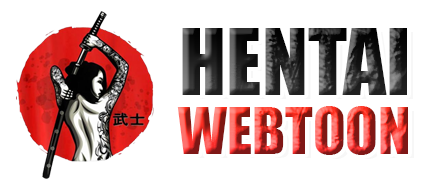From Still Image to Fluid Motion: The Next Frontier in AI-Generated Hentai Animation
Artificial intelligence has conquered the still image. With a few words, it can generate a work of art. But a single, frozen moment is one thing. Teaching an AI to dream in fluid, consistent motion? That’s the next great frontier.
The Uncanny Flicker: Why AI Animation is So Difficult
The leap from a single image to a 24-frames-per-second animation is gigantic. The single biggest hurdle is a problem called “temporal consistency.” It’s a simple concept. A nightmare of a technical problem. It means the character has to look like the same character from one frame to the next. The same face. The same clothes. The same hair. An AI image model, especially a diffusion model, is designed to inject a bit of randomness into every creation. When you generate one image, this is a feature, not a bug. It gives you variety. But when you generate 24 images in a sequence, that randomness becomes a curse. The character’s eyes might subtly change shape. The color of their hair might flicker. An accessory might appear and disappear. The result is a shaky, unstable mess that the human eye immediately rejects as unnatural.
Current Approaches: The Brute Force and the ‘Guiding Hand’
So how are creators tackling this? The earliest methods were pure brute force: generating hundreds of individual frames and cherry-picking the ones that looked right, a tedious and unreliable process. A more effective, modern approach is to give the AI a “guiding hand” using a technique called video-to-video translation. A user starts with a source video-perhaps a clip of a real person dancing or a 3D model performing an action. They then instruct the AI to “paint” the hentai art style over this existing motion. This ‘video-to-video’ technique is powerful because it provides the AI with a strong foundation for movement. The AI’s job isn’t to invent the motion, just to apply the art style. This is a fundamentally different task from a photorealistic tool like deepnude, which aims to alter a still image while preserving its realism. The goal here is the opposite: to take a real video and completely transform it into a piece of stylized, animated fantasy.
Interpolation and Keyframing: Teaching the AI to ‘Fill in the Blanks’
A more sophisticated method borrows a classic technique from traditional animation: keyframing. Instead of asking the AI to generate an entire sequence, the user provides it with a starting frame (Keyframe A) and an ending frame (Keyframe B). The AI’s job is then to perform “interpolation”-to intelligently generate all the transitional frames that create a smooth motion between A and B. This gives the creator a huge amount of control. It allows them to define the most important moments of the animation, leaving the more tedious “in-between” work to the machine. This method produces much smoother and more deliberate animations than simple frame-by-frame generation. It’s a true partnership between human direction and AI labor, where the human acts as the director and the AI as the tireless, infinitely fast animator. This technique is rapidly becoming the standard for high-quality, short-form AI animations.
The Data Hunger: The Massive Need for Animated Training Material
An AI can only learn what it is shown. To learn the principles of stylized animation, an AI needs to be trained on a massive dataset of… stylized animation. Millions of hours of it. This presents a huge data challenge. While the internet is flooded with still anime images, high-quality, well-labeled animated clips are much harder to come by. This leads to a difficult ethical and legal problem. Many AI models are trained by “scraping” content from video sites without the permission of the original animators. This means the AI is learning its craft from the uncredited labor of human artists. As AI animation becomes more popular, the debate over training data and copyright will only intensify. The machine needs a teacher, but right now, it’s often not asking for permission to attend the class.
Beyond Simple Loops: The Dream of a Storytelling AI
The current state-of-the-art in AI animation is mostly focused on creating short, looping clips, often of a single character performing a simple action. It’s impressive, but it’s not storytelling. The ultimate goal, the true next frontier, is an AI that can function like a director. An AI where you can provide a script, character sheets, and a storyboard, and it generates an entire, coherent, multi-character scene. This is a challenge of a completely different magnitude. It requires the AI to understand not just artistic style, but also narrative structure, character interaction, emotional expression, and the physics of how objects and bodies move within a scene. We are still a very long way from this reality. It requires breakthroughs in areas like long-term memory and spatial reasoning for AI models. But it is the clear end-goal for this technology.
Conclusion: The Animator’s New, Unpredictable Assistant
The age of AI-generated animation is here, but it’s still in its chaotic infancy. The challenge of temporal consistency is immense, and the ethical questions surrounding training data are far from settled. But the pace of progress is staggering. What was impossible just a year ago is now becoming commonplace. This technology is unlikely to replace human animators wholesale. Instead, it is evolving into a new kind of creative partner. An incredibly powerful, sometimes unpredictable, and infinitely fast assistant. It will handle the tedious work of interpolation and rendering, leaving human artists more time to focus on the things that truly matter: the spark of the initial idea, the emotion of the characters, and the art of the story. The machine is learning to move. The question now is, where will human creativity direct it?
